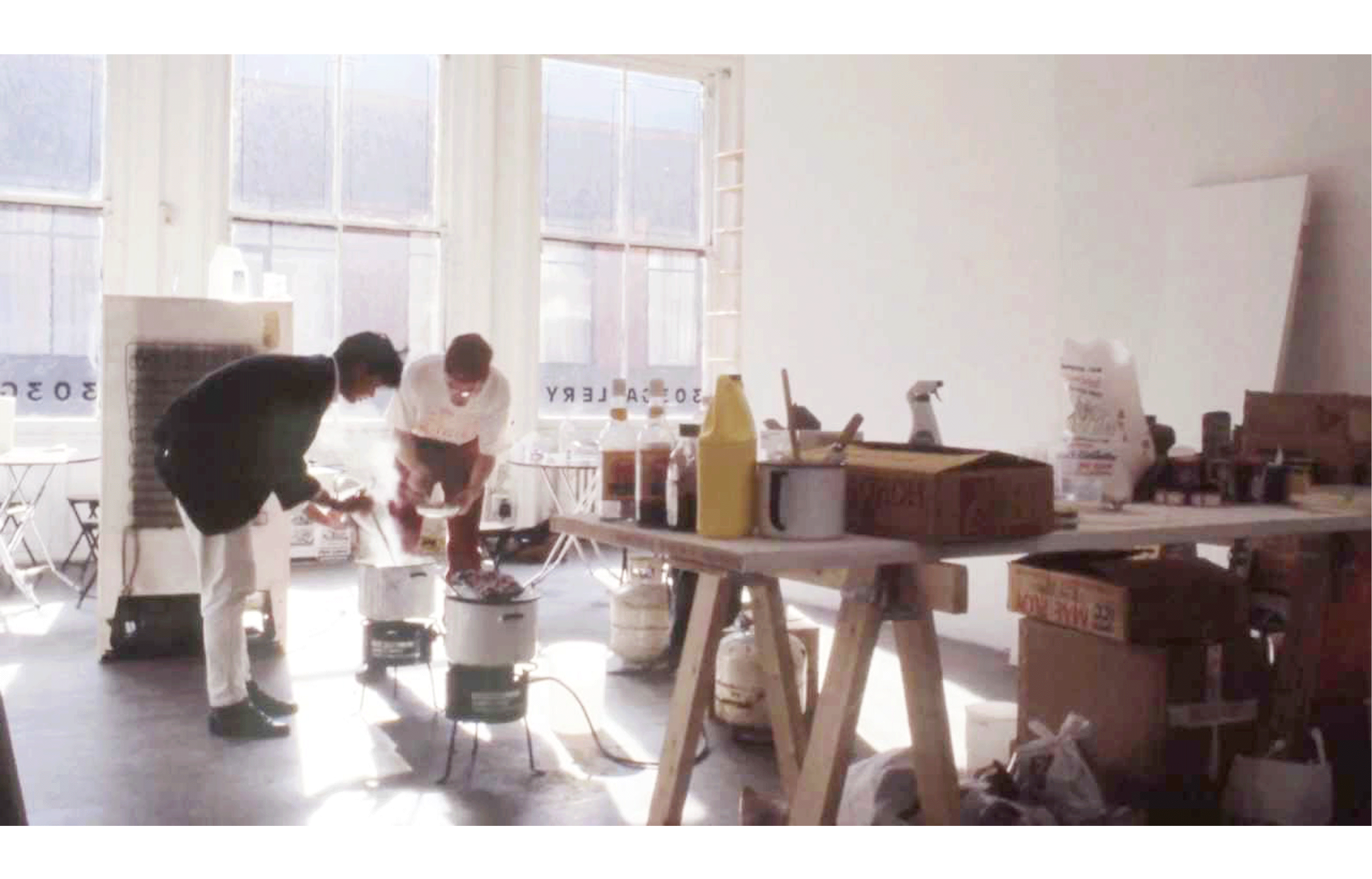Interim, forever
Introduction: 21 September 2021, 10:00am, ONA - Fokushalle E7

Rirkrit Tiravanija, Untitled (free/still), 1992
Phyllida Barlow, Stockade, 2015
Jim Jarmusch, Ghost Dog, 1999
Refining an idea until it is precise, developing a project so that it can be materialised, managing a design through the complexity of realisation. Architecture takes a long time and there is a strong temptation to reach for the eternal. Most of the constructed environment around us emerges out of even more complex circumstances and yet often comes together more quickly and flexibly. Are there things that architects can learn from how a farmer plans their fields to be productive and sustainable, how a tailor can mend a garment so that it acquires qualities that didn’t exist in the original, how resourceful builders can make do when materials and time are in short supply. Improvising and adapting have a long history in the built environment and now that the time for new building is coming to an end, perhaps architects need to more fully embrace the sensibility of the interim.
There is a long tradition of interim inhabitation, it is what squatters do, and it is acknowledged by artists when they move, like pioneers, into an unpopular quarter of the city. More recently the idea of interim inhabitation has become part of the development process, protecting empty buildings from squatters and vandalism, beginning to build the brand of what comes next. We are interested in all of these examples and wish to explore ways in which the positive qualities of the interim can be extended so that the seeming inevitability of gentrification is deferred, perhaps forever.
We will work in a series of buildings in Zurich that are currently being provisionally occupied under different legal arrangements. We will begin by closely observing and recording current conditions, learning something about the relationships between creative programme and inventive spatial practice. By deploying a series of processes; to repair, to collect, to mark, to remove, to arrange, to support, we will work to develop the current contingent situation into something more robust. In this process we will engage with the existing networks of inhabitants, building owners and spatial/material arrangement, and challenge the social, legal and aesthetic limitations of architecture.
Construction as an integrated discipline is included in this course
HS 2021, ETH Zürich, Studio Caruso
Emilie Appercé, Tibor Bielicky, Adam Caruso, Claudio Schneider, Barbara Thüler